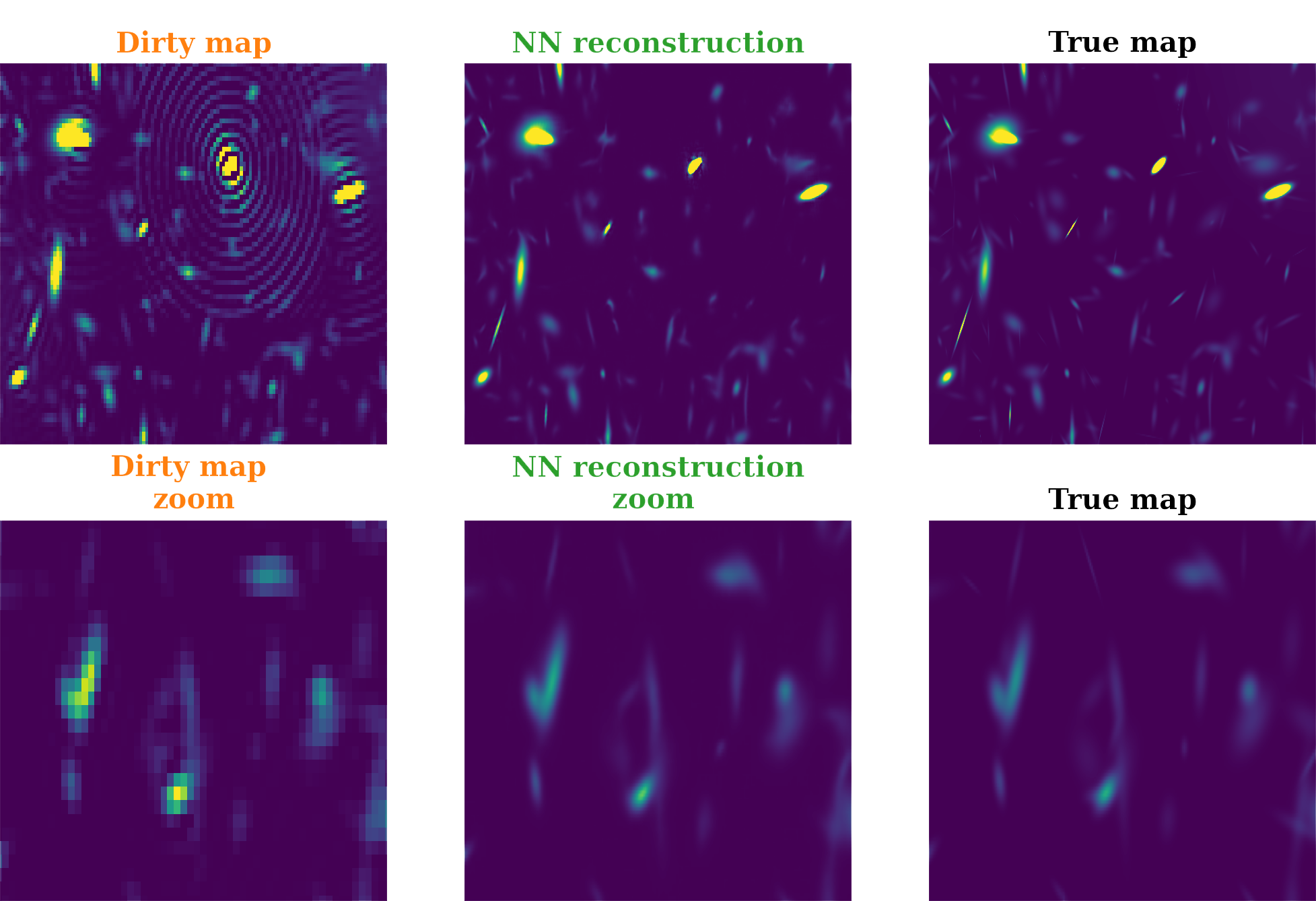Activities
Configuration
The planned locations of the 2000 antennas of the DSA-2000 will be optimize to minimize sidelobe levels in each 15-minute, full band (0.7 - 2 GHz) observation. A selection of configurations are being explored for this purpose.
Figure 1. (D. Woody)
Forward Modeling
Forward model the output of the array to create a synthetic visibility data set including realistic noise and calibration errors (direction-independent and direction-dependent) and a realistic range of input model sky images. The resulting datasets will be used for assessment of configurations and imaging algorithms and provide a test data set for software development and benchmarking.
Figure 2. (G. Hallinan)
Alternative Sky Reconstruction Techniques
Investigate alternative sky reconstruction techniques, together with alternative optimized configurations, that use compressed sensing / Bayesian algorithms and learning-based algorithms.
Super resolution will allow surveys like DSA 2000 to resolve sources beyond the diffraction limit. This will enable applications such as weak gravitational lensing that will complement SKA-II and Euclid in constraining cosmology. One approach we have developed at Caltech is to exploit the growing power of neural networks for imaging and computer vision. This figure shows a simulated sky image that has been convolved with a single-channel snapshot point spread function (left column). The middle column shows our neural network’s reconstructed image at four times higher spatial resolution, with the true sky shown on the right.
Figure 3. (L. Connor)
Streaming Pipeline Architecture
The RCI will build a radio camera - a digital backend that will produce visibilities and grid/image those same visibilities in real-time (applying flagging and calibration on-the-fly) on a high efficiency hardware platform (e.g., GPUs, FPGAs, TPUs). This requires a streaming pipeline architecture with modules for correlation, flagging, calibration, gridding/imaging. The RCI will initially make use of an existing architecture (Bifrost/HASHPIPE/PSRDADA) for development and testing and will eventually build a new optimized platform from the ground up.
Figure 4. (J. Kent & M. Laures)
End-to-end Demonstration
Demonstrate an end to-end streaming pipeline operating in real-time for a single node of the DSA-2000 radio camera. There is no communication between nodes in the radio camera concept, allowing a single node to represent a scalable demonstration of the final 512-node system. A prototype node (mario) has been purchased to create synthetic (forward modeled) data and a counterpart node (wario) has been purchased to demonstrate the streaming pipeline.
Figure 5. (G. Hallinan)





